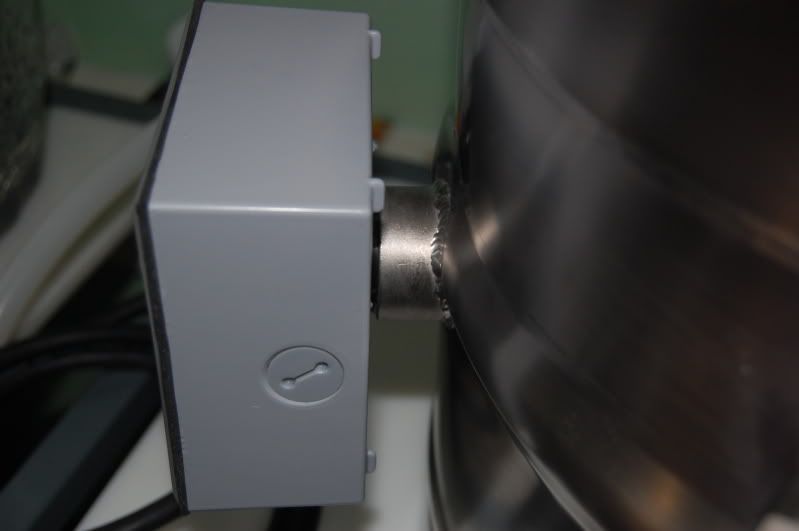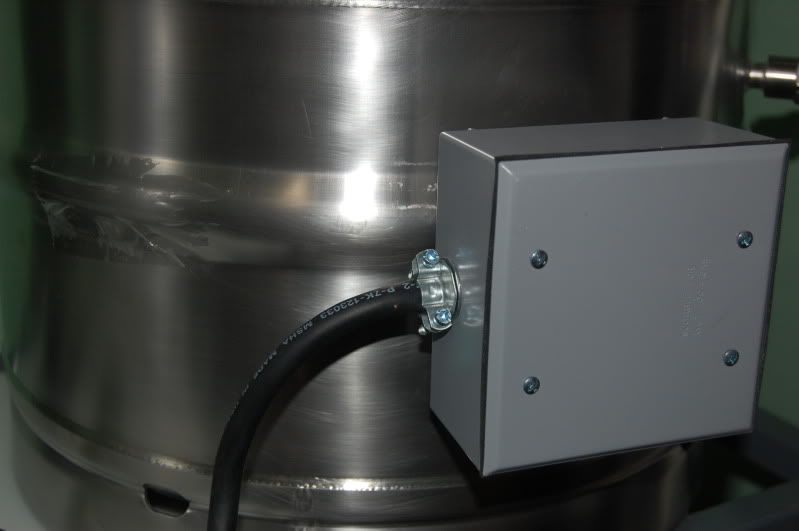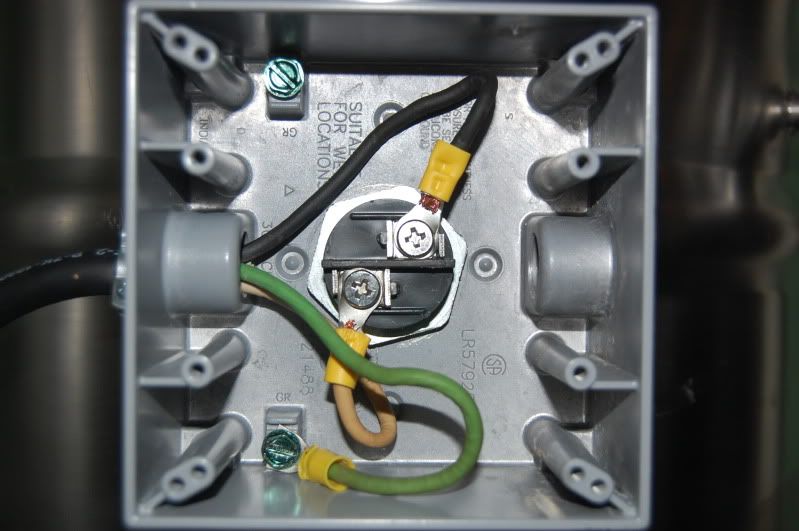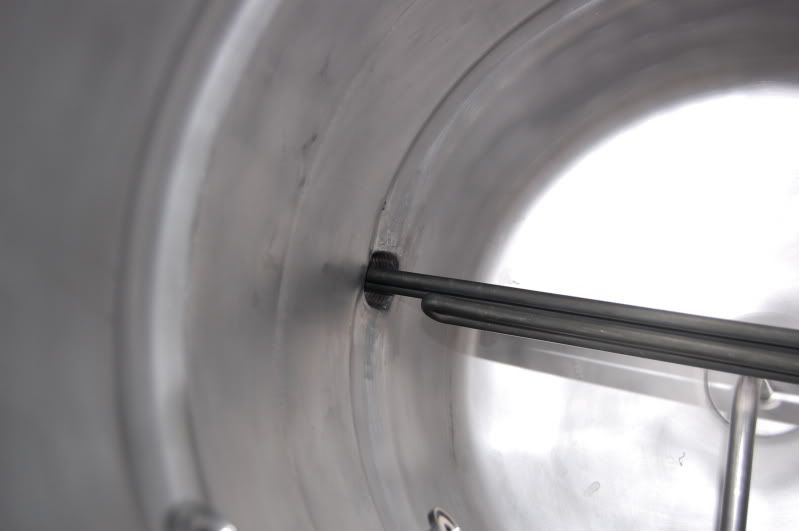Not for nothing, but there's a reason that things like ranges and heaters have expensive UL listings and funny-looking wires attached to them. You're attaching a heating element to the side of a kettle which will presumably approach 200F. NEC Table 310.15(B)(16) clearly shows that even THHN or XHHW wire insulation must be derated by Table 310.15(B)(2)(a) at a correction factor of .29, meaning the 12AWG cord & plug you probably got at Home Depot has at absolute BEST an allowable ampacity of 8.7 amperes. At the very least you'd need 6AWG which nobody's going to run for this, or you'd need type Z insulation per Table 310.15(B)(18) which you're DEFINITELY not going to run. And all that is to say nothing of the fact that the unit could foreseeably be used for more than 3 straight hours making it a continuous load. Oh, and the wet or damp location, combined with the cord & plug design. Oh oh! And the lack of ground fault protection! Hell, if you didn't know any of the other stuff you should probably throw in arc fault protection too, because there's a good chance your wiring/splicing methods leave something to be desired.
Long story short: spring for the extra couple bucks to buy one or give an electrician a case of beer to wire it, because saving a few dollars isn't worth killing your family, your neighbors, or your friendly neighborhood fireman.





